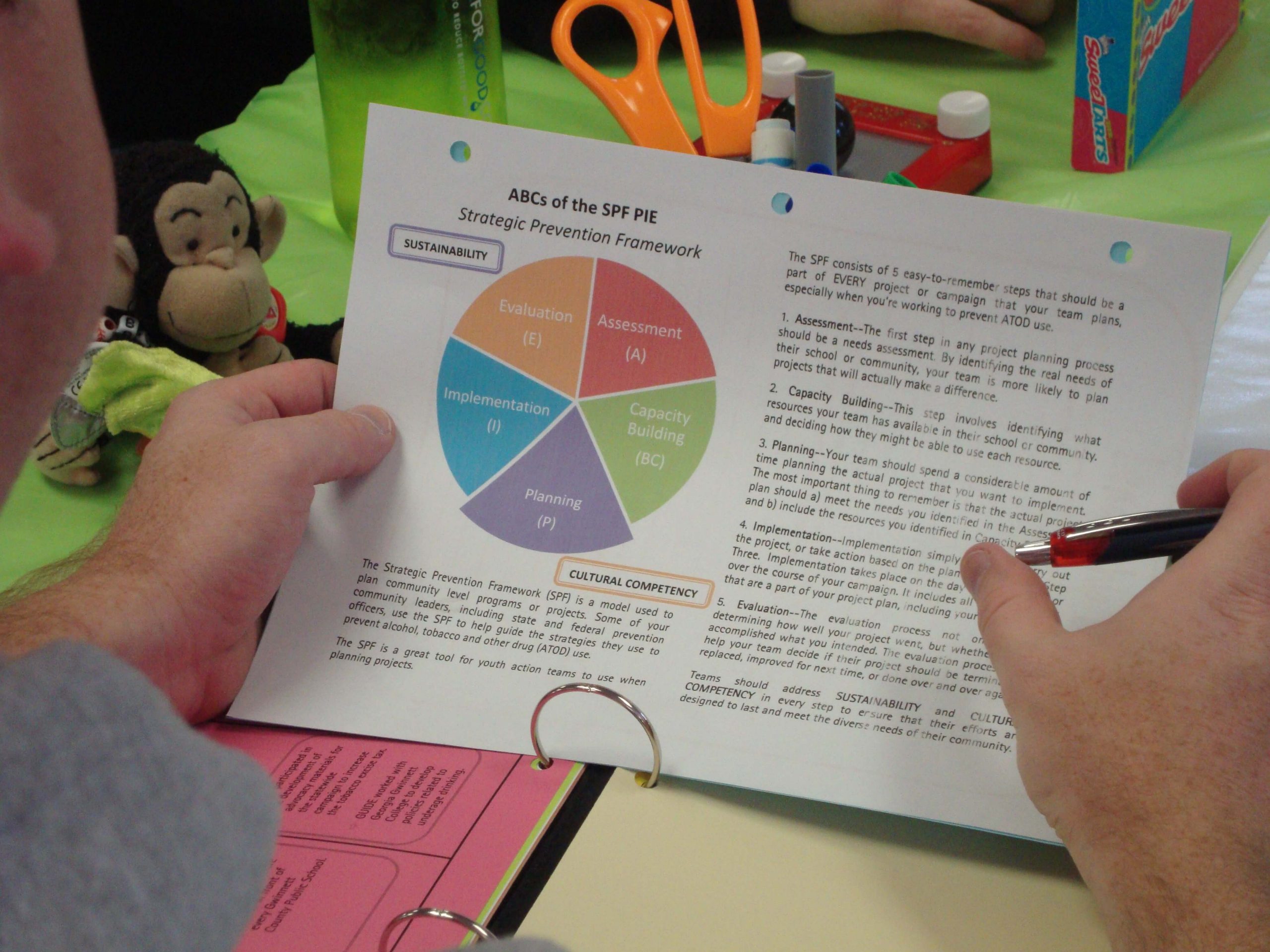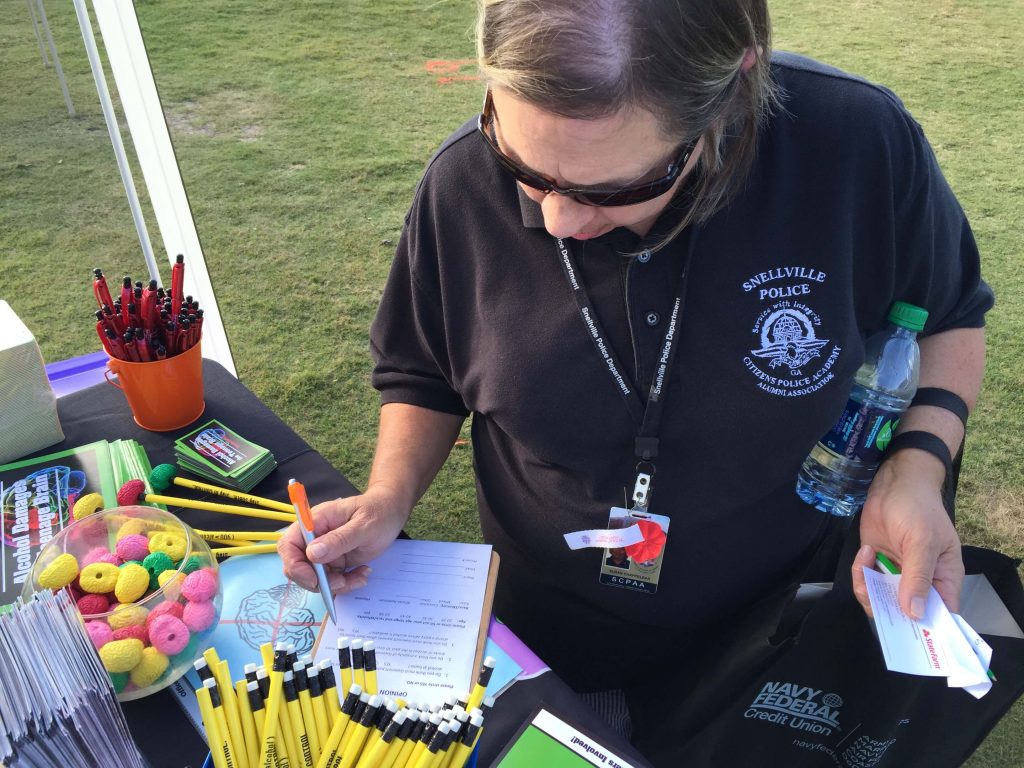 Did you get a chance to read our SPF Series Kickoff blog post a few weeks ago? If so, you already know how excited we are to be sharing the Strategic Prevention Framework (SPF) with our readers over the next few weeks. In continuing with our series, we are now going to explore the very important first step of the SPF: Assessment!
Did you get a chance to read our SPF Series Kickoff blog post a few weeks ago? If so, you already know how excited we are to be sharing the Strategic Prevention Framework (SPF) with our readers over the next few weeks. In continuing with our series, we are now going to explore the very important first step of the SPF: Assessment!
Without assessment, we cannot make informed decisions about the needs and resources already available in the community. A successful project or program begins with assessment.
This may include gathering new data and/or examining data that is already available related to substance abuse and related problems in your community or interviewing different members in a community about those problems.
In the realm of prevention, it is important to assess a community’s needs before you start a program or project. Many times programs or projects are started because a group of people perceive that there is a specific problem in a community and start addressing it without talking to the community and having data to back it up. This can end up causing more harm than good though duplication of services and unnecessary competition.
 At GUIDE, we believe that data must drive our projects and programs in order for them to be successful and relevant.
At GUIDE, we believe that data must drive our projects and programs in order for them to be successful and relevant.
For example, in preparation for our current project, which is a part of the state’s effort to reduce underage drinking, we dedicated a large amount of our time to conducting a needs assessment. By doing the needs assessment, we were able to identify the level of underage drinking in our community and compare the results to other counties and the state, find out the current community perceptions about underage drinking, where problems related to underage drinking were occurring and citizens and key stakeholders thoughts about these issues.
Our needs assessment included surveying community members and law enforcement, using secondary data from the Gwinnett Coalition’s Youth Health Behavior Survey that showed us the percentage of youth who consumed alcohol in the past 30 days and numerous state and national data sources. These resources, including the Georgia Student Health Survey results, allowed us to create a comprehensive assessment about our underage drinking project.
Once we were able to confirm that underage drinking is an issue that needs to be addressed, we assessed the issue further to find out how teens were accessing alcohol.
 The surveys conducted among community members revealed that one way youth are able to access alcohol is from buying it at retail stores, restaurants, and bars. We also discovered from the Gwinnett Coalition’s Youth Health Survey that, among the youth who drink, many get their alcohol from friends, parents, and other adults. Furthermore, our community survey results indicated that most adults thought it was okay for underage youth and young adults to drink at home-based events and that the law enforcement efforts were minimal with few, if any, consequences to providing it. From all of our assessments, we could then determine the steps we needed to take to prevent underage drinking in our community. We knew that it would be important to reduce the social and retail access teens have to alcohol.
The surveys conducted among community members revealed that one way youth are able to access alcohol is from buying it at retail stores, restaurants, and bars. We also discovered from the Gwinnett Coalition’s Youth Health Survey that, among the youth who drink, many get their alcohol from friends, parents, and other adults. Furthermore, our community survey results indicated that most adults thought it was okay for underage youth and young adults to drink at home-based events and that the law enforcement efforts were minimal with few, if any, consequences to providing it. From all of our assessments, we could then determine the steps we needed to take to prevent underage drinking in our community. We knew that it would be important to reduce the social and retail access teens have to alcohol.
Assessment doesn’t stop. At GUIDE, we continue to assess problems related to underage drinking to measure the effectiveness of our efforts and dictate how we continue to proceed with our projects. It is an ongoing process as new partnerships are developed, new resources become available and new data is collected locally, statewide and nationally.
As you can see, assessment is a critical first step in addressing any issue in a community because, as SAMHSA states, “it doesn’t matter how carefully a program or practice is implemented. If it’s not a good match for the problem, it’s not going to work.”
Check out the next part in our SPF series on Building Capacity and Cultural Competency!
